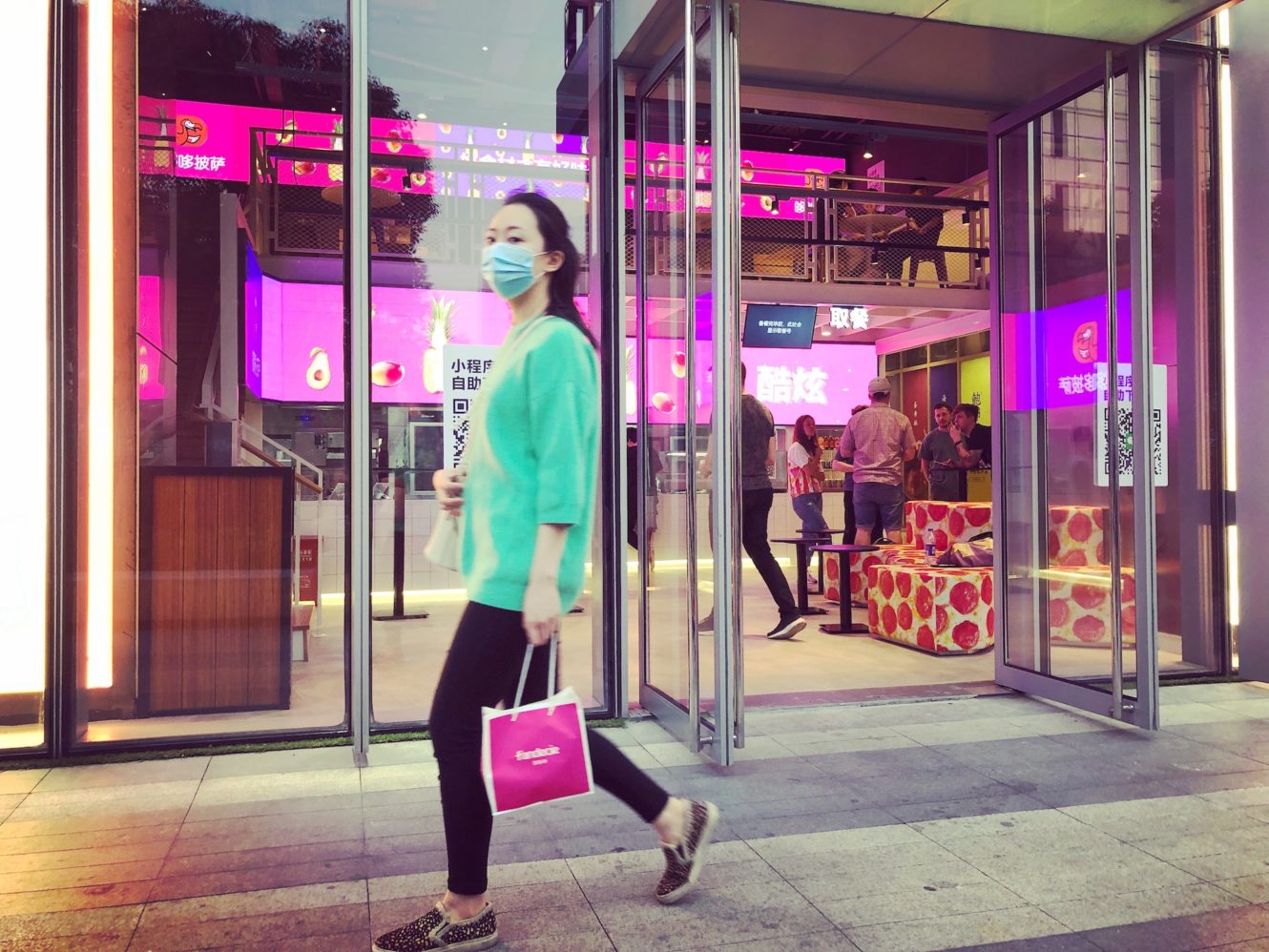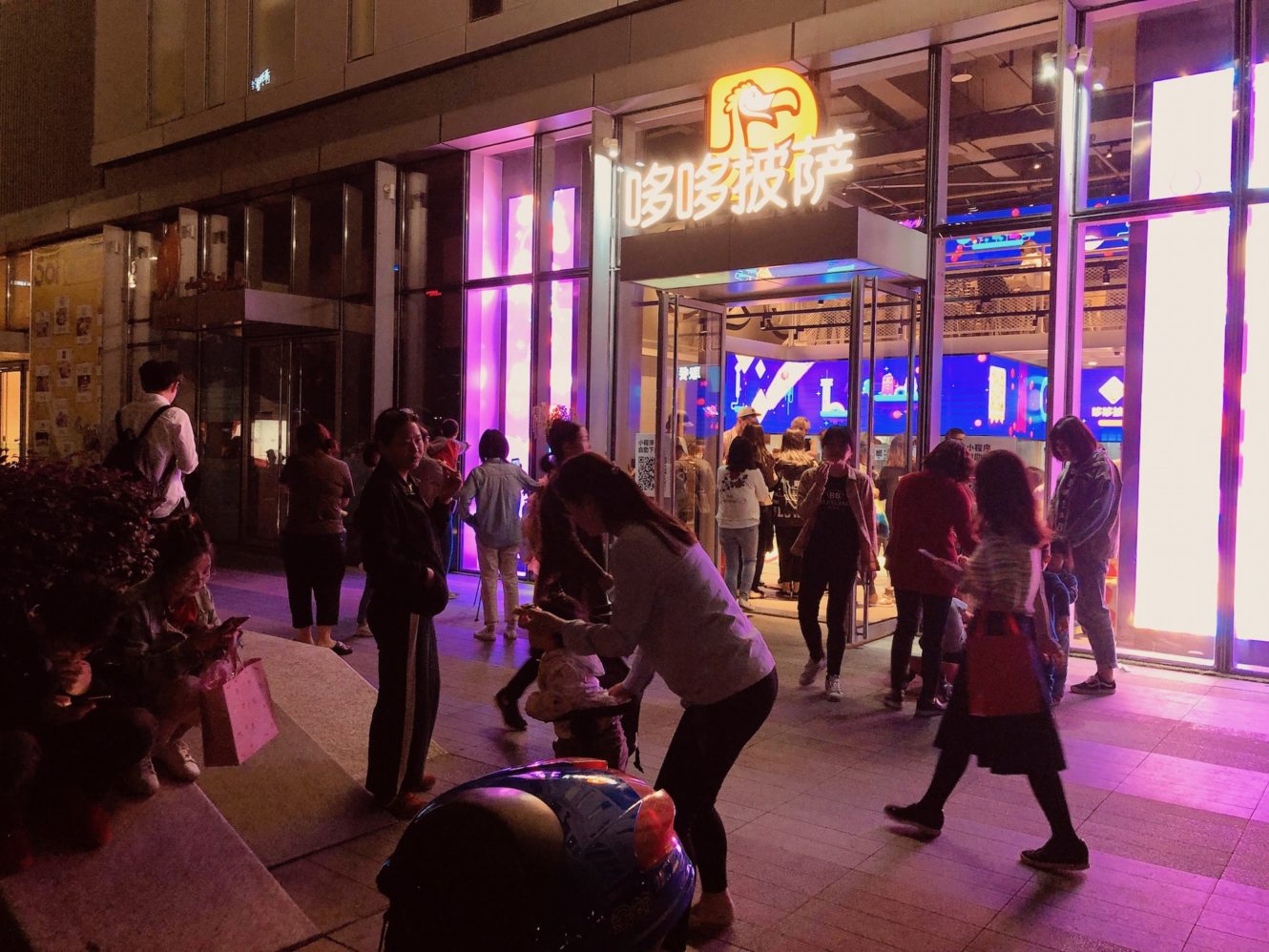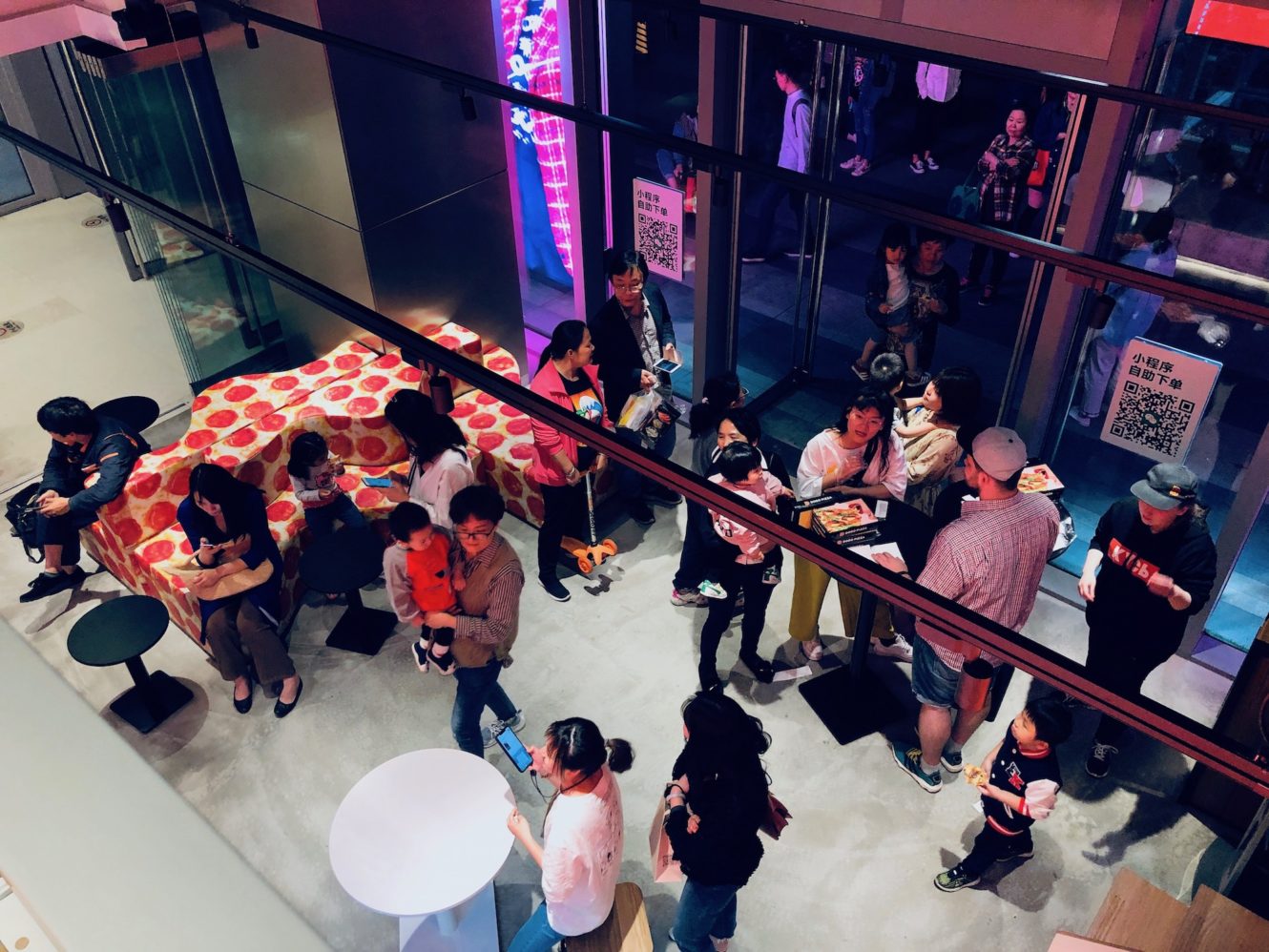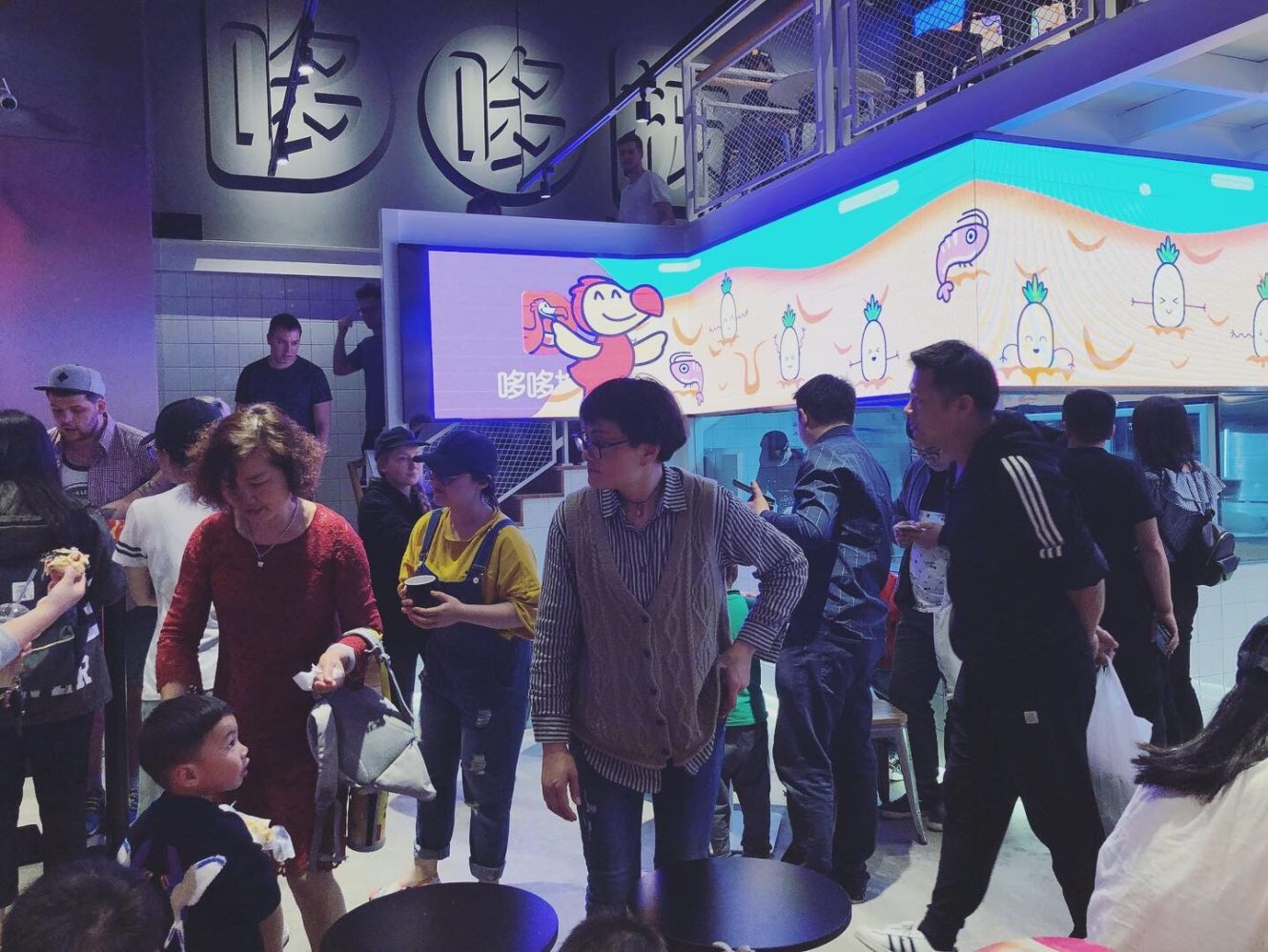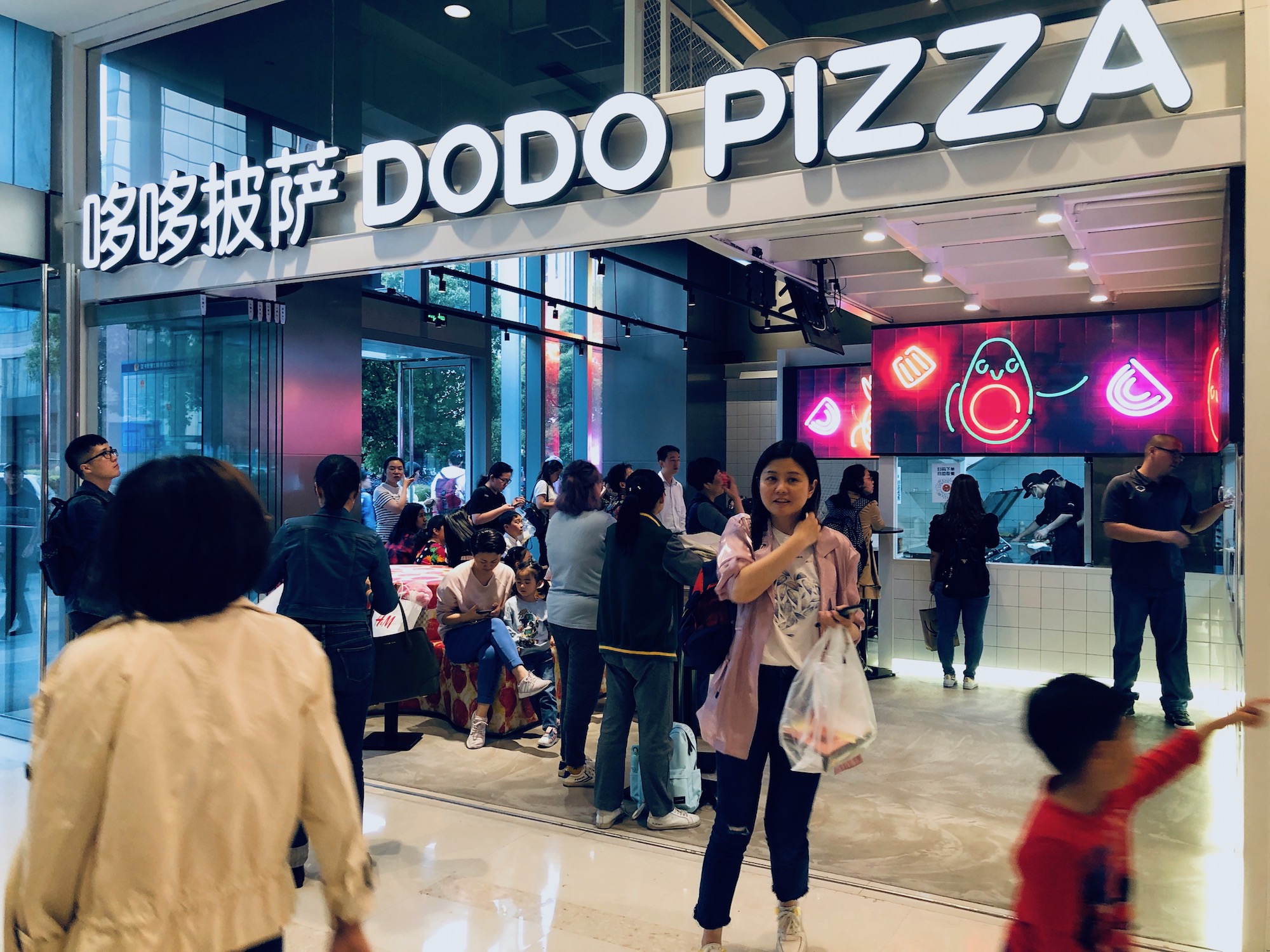
Dodo Pizza in Hangzhou: Day 5
13 May 2019
Our pizzeria in Hangzhou has been working for five days now, and I’ve just gotten around to sharing our first results, findings, and observations with you.
Last year, we made the decision to launch a pizzeria in China in a completely new format for us. We called this project “the pizzeria of the future” because it would be without cash or cashiers, and all orders would be processed via the Chinese messenger WeChat app. We also planned to use a new kind of dough (pre-baked dough) that would allow us to make a small pizza for one person in 4 or 5 minutes and do so without a big kitchen—instead, all ingredients would be delivered from a commissary, which would allow us to rent costly but small premises situated in locations with excellent foot traffic.
So, nine months have passed, and “the pizzeria of the future” has finally been opened.
What you should know about our current pizzeria in Hangzhou is that it is really a minimum viable product. Our main goal was to open it as quickly as possible and then, based on customer behavior, sales analysis, and information we gather from our guests, work further on our model and build the whole system from there. At the preliminary stage, we aimed at making a product—that is, the whole system, from the pizza itself to customer service and a mobile app—of sufficient quality for the launch. What does that mean: sufficient quality? It’s when our guests come back.
As for the details, the level of uncertainty was very high. Our concept was totally a revolution for us; we’d always focused on pizza delivery, used another kind of dough altogether, and had no idea how a cashier-less pizzeria would even work. So we didn’t try to look for system solutions to many potential problems, because we couldn’t know how those solutions would work in reality after the launch. For instance, we were working towards the opening of our pizzeria not knowing exactly how we would bake dough of consistent quality and in bulk, how and where we would prepare ingredients, how and when we would deliver supplies, what sales it would be reasonable to project, how many employees we would need in the pizzeria and commissary for starters, how the pizzeria management would be arranged… and that was just a part of it.
Currently, we aren’t aiming at aggressive sales revenue increases and the “pizzeria of the future” profitability. We’ve launched a whole new concept in a complex market that is still quite vague for us; this is not simply R&D in progress, it’s the beginnings of R&D. So now we’re simply doing our best to arrange the smooth workings of our first pizzeria in China and the consistent quality of our product and service. For example, yesterday, we made a mistake estimating potential sales, dough ran out, and we had to stop selling pizza an hour before our closing time. For the last two days, I’ve been helping to build the kitchen management system.
The main question of these first days was if our general idea would work. And I think we’ve got our answer: yes, it will. I think we’re backing the right horse, but there’s a great deal of work ahead of us, and we need to improve our project constantly every day. An idea is important, but in the end, everything depends on its implementation.
So, here are the dry facts about our Hangzhou pizzeria in its first days:
- May 9 (we opened at 1 p.m.): 62 orders, sales revenue ¥2674, average check ¥43
- May 10: 301 orders, sales revenue ¥1861
- May 11 (11 a.m. to 9 p.m.): 81 orders, sales revenue ¥3627, average check ¥48
- May 12 (11 a.m. to 9 p.m.): 84 orders, sales revenue ¥3664, average check ¥43
On May 10, we announced a promotional offer in the WeChat app with a free pizza for every new customer. That was one of the promotional activities planned for introducing our pizzeria to customers. In just a few hours, a large crowd gathered, and we received more than two hundred free pizza orders. Our kitchen was swamped. Ingredients ran out, and the shortage of employees was felt acutely. Some guests waited more than an hour for their order, and finally we had to cancel our offer until a time when we would learn to cope with such a great number of orders.
And here are the key conclusions we’ve drawn after the first days of work:
1. We’ve succeeded in making a product that our Chinese customers like. Our Chinese pizza is very light due to our using “Roman” dough, and in China, they really appreciate that. By the end of the pre-launch stage, our R&D team had created recipes that were welcomed by our guests warmly. We’ve been working less than four days now, and our guests have already started to come back. According to our WeChat app statistics, on the third day, May 11, 4% of our guests from May 9 and 10 returned to order again (May 10 is a special case because of the promotional free pizzas we gave out that day). Every evening, we do promotional samplings and offer free pizza slices to passersby. Many people, having tasted our pizza, come inside and make a real order.
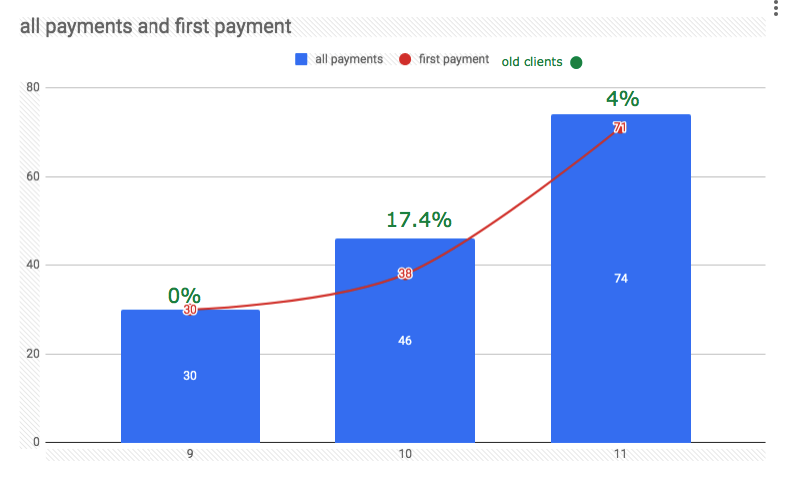
2. Our cashier-less service model does work. All orders are made via the WeChat app. So far, not a single customer had any objections to such a system. Pizzeria service without cashiers is very simple and efficient. Guests don’t have to stand in a queue. All orders are processed instantly. The pizzeria team doesn’t have to spend time handling cash. There is no cash logistics, no complex counting of the proceeds at the end of the day, and no liability for money in the cash register. A shift is ended by pushing two buttons, and that’s all. Through the WeChat app, we know all our guests, and we know a lot about them—their gender, age, and last order. We know the conversion rate of those who open the WeChat app to those who actually make an order. It’s the most powerful tool for the improvement of our product and format and a great opportunity to work with our customers.
3. Lots of things need to be worked on further or simply changed. All passersby notice our bright pizzeria with flashing screens but don’t realize that it’s actually a pizzeria. We’ve gathered initial customer feedback, and people tell us they think it’s a nightclub or a clothes store; the problem is, the Dodo Pizza sign hangs quite high, so those who walk along the windows simply don’t see it. And those who understood that it was a pizzeria didn’t realize that it was a pizza take-away, not a dine-in, and you didn’t have to wait for your order for long here.
As of yet, we haven’t explained our unique advantages to our customers because we didn’t realize them exactly ourselves. We didn’t know what our Chinese guests considered valuable. All this should change. Our format needs a clear marketing strategy, and our product an explicit demonstration. We need to improve our pizzeria layout according to the behavior of our customers. And we also need to create an app for AliPay; Hangzhou is the hometown of Alibaba, so everybody uses AliPay there, and WeChat Pay, as it turns out, is not ubiquitous. Et cetera.
These first days are just the beginning of a long and exciting journey. I guess the bottom line is another confirmation of the same old knowledge—any idea, however brilliant, is of no worth without detailed and deep immersion into the situation in the field and focus on customers, processes, and the team. I think I’ll be visiting China quite frequently in the coming years.
Subscribe to Dodo Insider, a weekly newsletter put together by our team every week, to get updates about our China project:
Invalid optin campaign ID

